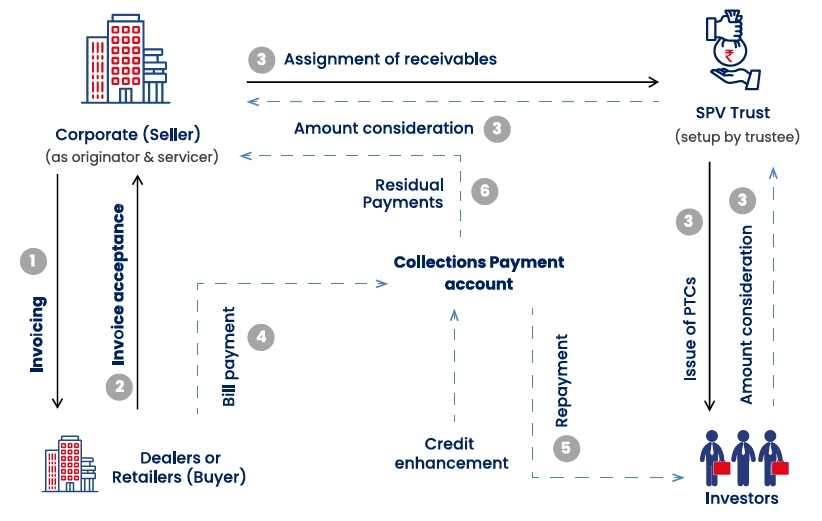Tech and Trends
How CXOs can put Psychology Concepts to use before the festive season

As we approach the festive season, businesses often see a spike in consumer spending. This surge is driven not just by discounts and deals, but by deep-rooted psychological factors that influence how consumers think and act. Festivals like Diwali, Dussehra, and Christmas tap into emotional, cultural, and social triggers, driving purchases across categories.
But there’s more – The FOMO Effect. The fear of missing out on deals or not keeping up with communal celebrations kicks in hard, fueling spending even further. Festivals put people in a heightened emotional state, where impulse buys and splurging on loved ones feel just right. No wonder urban India is expected to shell out a massive ₹1.85 lakh crore ($22 billion) this festive season, with 50% of households spending over ₹10,000.
In this article, we will explore the cognitive biases that shape festive shopping habits and offer insights to help CXOs enhance their strategies.
1. The Power of Social Proof in Festive Shopping
Social proof plays a huge role in shaping our shopping decisions, especially during the festive season when people are flooded with options. It’s simple—when we’re unsure, we look to others for guidance. This effect is particularly strong online, where conversions increase by 133% when mobile shoppers encounter positive reviews before buying.
For instance, a leading online marketplace harnesses social proof through “customers who bought this also bought” and extensive user reviews. These features help shoppers feel more confident by showing them that others have already made similar choices, especially during festive sales. With over 2 billion products, this e-commerce brand uses reviews to build trust and drive sales.
By actively encouraging customer reviews, sharing testimonials, and promoting user-generated content, corporates can strengthen product credibility and boost sales. It’s all about creating that sense of trust, which leads to higher conversions and better overall performance, particularly during the high-stakes festive season.
2. Anchoring and Loss Aversion Tactics – the powerful psychological tools
Food delivery companies use anchoring by displaying inflated “before discount” prices during festive deals, creating the illusion of greater savings when a discount is applied. Similarly, loss aversion leverages the fear of missing out by framing offers as limited time, prompting faster decisions to avoid perceived losses.
By recognizing these behavioral triggers, CXOs can optimize customer engagement without relying on artificial discounts or pressure tactics.
3. Leveraging the Endowment Effect
During festive sales, retailers often leverage the endowment effect, where customers tend to value items more once they feel a sense of ownership. For example, mobile phone stores via their experience centers encourage potential buyers to interact with new devices, fostering a feeling of possession even before purchase. This strategy taps into the psychological attachment that drives higher spending and increased sales performance.
Companies manufacturing or selling high-ticket items can use this insight to design customer experiences that build emotional investment, encouraging purchase decisions and fostering long-term brand loyalty.
Success Metrics
Customer satisfaction metrics are vital for measuring business success, but deeper insights can drive more strategic decisions. Beyond traditional surveys and ROI, CFOs and CXOs should consider more sophisticated tools:
- Sentiment Analysis (Online & Offline): Analyzing customer sentiment across social media, reviews, and in-store interactions can provide real-time feedback on consumer perceptions and emotional responses, especially during festive sales.
- Product Reviews & Referrals: Monitoring reviews and referral rates offers insights into customer advocacy and product performance. Positive reviews and recommendations reflect both satisfaction and brand strength.
- Path-to-Purchase Tracking: Using in-store technology such as heat maps and mobile data can help track customer journeys, identifying key touchpoints that influence purchase decisions. This data helps optimize store layouts and offline marketing tactics.
- In-store Tech Integration: Leveraging tools like smart shelves, beacons, and RFID can track customer behavior, engagement, and preferences in real-time, allowing for personalized experiences and targeted offers.
- Net Promoter Score (NPS): Measures customer loyalty and their likelihood to recommend the brand, which is critical during and after the festive season.
- Repeat Purchase Rate (RPR): This metric helps determine how many customers return for another purchase after their first festive shopping experience. A higher RPR often correlates with the success of emotional triggers and loyalty tactics like the endowment effect.
Understanding the psychological factors that shape consumer behavior during festive sales has a significant impact on customer satisfaction and overall business performance. By leveraging social proof, anchoring, loss aversion, and the endowment effect, CXOs can develop strategies to boost sales and strengthen brand loyalty. A deep understanding of cognitive biases combined with careful measurement allows companies to create more meaningful connections with their customers, leading to improved sales performance and sustained growth.







